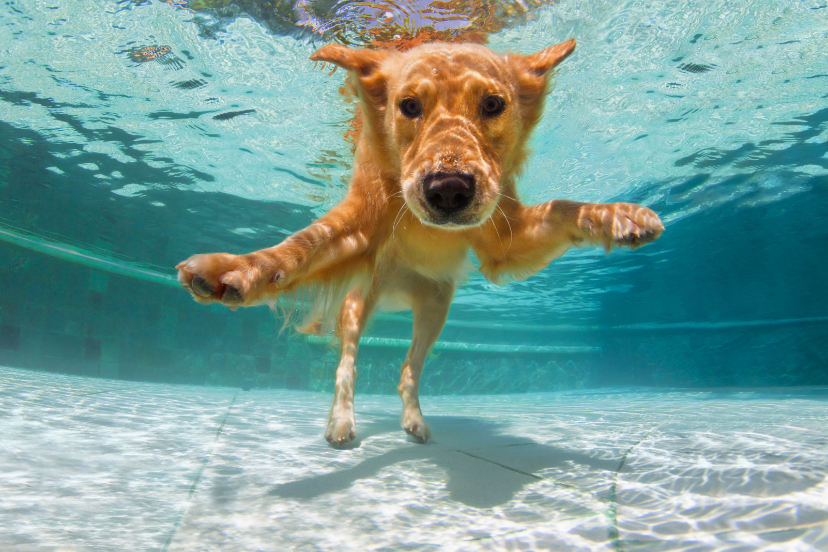Dog Swimming Lessons: Paws, Splashes, and Tail Wags!
Introduction
Swimming isn’t just for humans—dogs can benefit immensely from learning to swim. Dog swimming lessons offer a fantastic way to exercise, build confidence, and even assist in rehabilitation for some medical conditions. This article will delve into why dog swimming lessons are a great idea, how to get started, and what to expect along the way.
Why Dogs Should Learn to Swim
Dogs are natural swimmers. Many breeds, such as Labrador Retrievers and Golden Retrievers, were bred for water work, making swimming a part of their instincts. However, not all dogs are confident in the water. Dog swimming lessons can help overcome fears, teach proper swimming techniques, and ensure your dog’s safety around water.
Swimming is a full-body workout that can improve your dog’s overall fitness. It’s a low-impact exercise, ideal for dogs with arthritis or those recovering from surgery. Additionally, swimming can provide mental stimulation and reduce stress.
Benefits of Dog Swimming Lessons
- Improved Physical Health: Regular swimming can enhance cardiovascular fitness and muscle strength.
- Enhanced Mental Well-being: Swimming helps alleviate boredom and anxiety.
- Weight Management: A great exercise for maintaining a healthy weight.
- Rehabilitation: Ideal for dogs recovering from injuries or surgeries.
- Confidence Building: Helps dogs overcome their fear of water.
Getting Started with Dog Swimming Lessons
Choosing the Right Instructor
Finding a qualified instructor is crucial for successful dog swimming lessons. Look for professionals with experience in canine aquatic training. They should be familiar with dog behavior and able to tailor sessions to your dog’s specific needs.
Selecting a Suitable Pool
Not all pools are created equal for dog swimming. Look for facilities that are clean, well-maintained, and have shallow areas for beginners. Some pools are specifically designed for dogs, with non-slip surfaces and ramps for easy entry and exit.
Preparing Your Dog
Before starting lessons, make sure your dog is comfortable with basic commands and can handle being in new environments. Introduce them to water gradually. You can start by letting them explore shallow water and gradually increase the depth as they become more confident.
What to Expect During Dog Swimming Lessons
Initial Assessment
The first lesson usually involves an assessment of your dog’s swimming ability and comfort level. The instructor will gauge how your dog reacts to water and whether they have any fears or anxieties.
Training Techniques
During lessons, your dog will learn how to swim efficiently and safely. Techniques may include:
- Positive Reinforcement: Reward-based training to encourage your dog.
- Controlled Entry: Teaching your dog how to enter and exit the pool safely.
- Swim Techniques: Ensuring your dog uses proper form to prevent injuries.
Safety Measures
Safety is paramount in dog swimming lessons. Instructors should use safety equipment, such as life jackets, especially for beginner swimmers. Always supervise your dog during lessons and follow the instructor’s guidelines to prevent accidents.
Common Challenges and Solutions
Fear of Water
Some dogs are naturally apprehensive about water. Gradual exposure and positive reinforcement can help. Use treats and praise to create a positive association with water.
Overexertion
Dogs can easily become tired from swimming. Ensure your dog takes regular breaks and monitor them for signs of fatigue or discomfort.
Handling Distractions
Distractions can be a challenge. Ensure the swimming environment is calm and free from other animals or loud noises that could startle your dog.
FAQs About Dog Swimming Lessons
1. What breeds are best suited for dog swimming lessons?
Breeds like Labrador Retrievers, Golden Retrievers, and Poodles generally excel in swimming due to their natural affinity for water. However, any breed can benefit from swimming lessons.
2. How often should my dog attend swimming lessons?
Typically, 1-2 lessons per week is sufficient. The frequency may vary depending on your dog’s fitness level and goals.
3. Are dog swimming lessons safe for all dogs?
While swimming is generally safe, dogs with certain health conditions should consult a vet before starting lessons. Ensure the instructor is aware of any medical issues.
4. How long does it take for a dog to learn to swim?
The time it takes varies. Some dogs may take to swimming quickly, while others might need several sessions to build confidence and skill.
5. What should I bring to dog swimming lessons?
Bring a collar, leash, and any necessary gear such as a life jacket if recommended by the instructor. It’s also a good idea to bring towels and water for after the lesson.
6. Can dog swimming lessons help with behavior issues?
Yes, swimming can help reduce anxiety and improve behavior by providing mental stimulation and physical exercise. However, it should be combined with other forms of training for best results.
Conclusion
Dog swimming lessons offer a wealth of benefits for both dogs and their owners. From improving physical health and confidence to aiding in rehabilitation, these lessons can be a valuable addition to your dog’s routine. By choosing the right instructor, preparing your dog properly, and understanding what to expect, you can make swimming a positive and enjoyable experience for your furry friend. Dive in and watch your dog thrive with the magic of water!




